How to Choose the Right Drill for Concrete
Complete Guide to Selecting the Best Tool for Your Concrete Drilling Projects
Article updated on 08/18/2025
At a glance: Which drill for concrete?
For lighter concrete (brick, cinder block), a 600–800 W hammer drill is sufficient. For hard or reinforced concrete, go with an SDS-Plus rotary hammer delivering at least 2 Joules, along with the right drill bits and step-by-step drilling.
Quick checklist:
- SDS-Plus rotary hammer ≥ 2 J for hard/reinforced concrete
- Carbide-tipped or SDS-compatible concrete drill bits
- Drill at moderate speed, in stages
Concrete Characteristics and Drilling Challenges
Dense and resistant material
Made of cement, aggregates, and sand, concrete offers strong resistance to drill bit rotation.
Presence of reinforcement bars
In reinforced concrete, steel rods can block or damage the tool.
Heat and dust
Friction generates significant heat and abrasive dust, which slows down progress.
Uneven hardness
The mix of softer zones and very hard aggregates can cause the bit to deviate or get stuck.
Why a Standard Drill Isn’t Enough for Concrete
- No hammering action: a regular drill only rotates, which isn’t enough to break through the aggregates in concrete.
- Risk of overheating: the material’s resistance puts excessive strain on the motor and quickly dulls the drill bit.
- Almost no progress: even with a standard masonry bit, drilling is slow and often impossible in hard or reinforced concrete.
- Premature wear: repeated use on concrete can cause irreversible damage to the tool.
- For effective drilling, you need a combination of rotation and sustained hammering power—something only hammer drills and rotary hammers can provide.
Types of drills for concrete
Hammer Drill

- Principle: drill bit rotation combined with rapid mechanical hammering.
- Use: suitable for soft to medium masonry materials (brick, cinder block, light concrete).
- Versatile (can drill wood, metal, light masonry).
- Lighter and easier to handle than a rotary hammer.
- Affordable purchase price.
- Limited power in hard or reinforced concrete.
- Requires strong manual pressure.
- Not suitable for heavy-duty drilling or large diameters.
Rotary Hammer (Hammer Drill)

- Principle: electro-pneumatic hammering, delivering powerful blows at a lower frequency.
- Use: ideal for hard concrete, reinforced concrete, and repetitive tasks.
- High impact energy (typically 2 to 4 Joules).
- Requires little physical effort.
- Often multifunctional (drilling, hammering, chiseling).
- Heavier and bulkier than a standard hammer drill.
- Higher cost, including specific drill bits.
- Less precise for small diameters.
Comparison: Hammer Drill vs. Rotary Hammer
Criteria
Hammer Drill
Rotary Hammer
Selection Criteria for a Drill Suitable for Concrete
Power and Impact Energy
- Hammer Drill: at least 600 W for occasional use on concrete.
- Rotary Hammer: 800 to 1500 W depending on workload.
- Impact Energy: expressed in Joules (≥ 2 J recommended for reinforced concrete).
Rotation Speed and Hammering Rate
- Rotation: variable speeds to adapt to different materials.
- Hammering: the higher the blows per minute, the faster the drilling — provided the energy per blow is sufficient.
Chuck Type
- Standard 13 mm: accepts cylindrical-shank bits, suitable for hammer drills.
- SDS-Plus / SDS-Max: specific to rotary hammers, ensures excellent impact transfer and quick bit changes.
Weight and Ergonomics
- Lighter weight for overhead work.
- Auxiliary handle and non-slip grip for better control.
- Anti-vibration system recommended for prolonged use.
Power Supply
- Corded: constant power, ideal for heavy-duty use.
- Cordless: increased mobility; choose at least 18 V with a ≥ 4 Ah battery.
Safety and Durability
- Safety clutch (anti-kickback).
- Overheat protection.
- Sturdy design with quality components.
Our selection of drill models suitable for concrete

Bosch Professional GBH 2-28 F – Corded SDS-Plus Rotary Hammer
Rotary Hammer
Corded
Professional
Strengths: 880 W, 3.2 J impact energy, anti-vibration system, interchangeable SDS-Plus / 13 mm chuck, safety clutch.
Limitations: corded, weight of 2.9 kg.
Recommended use: regular work on hard or reinforced concrete, professional use, and intensive DIY.
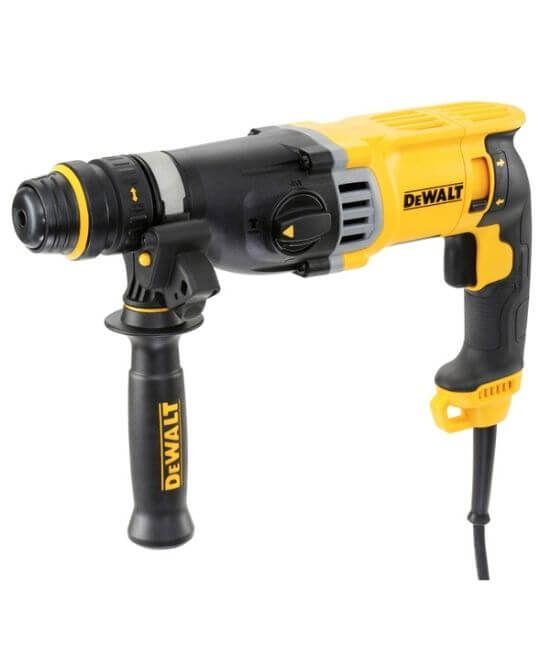
DeWalt D25133K-QS – Compact SDS-Plus Rotary Hammer
Rotary Hammer
Corded
Compact
Strengths: 800 W, 2.8 J, 3 modes (drilling, hammer drilling, chiseling), lightweight (2.6 kg), good value for money.
Limitations: less efficient for larger diameters (> 22 mm).
Recommended use: versatile construction work, anchoring in concrete, demanding home projects.
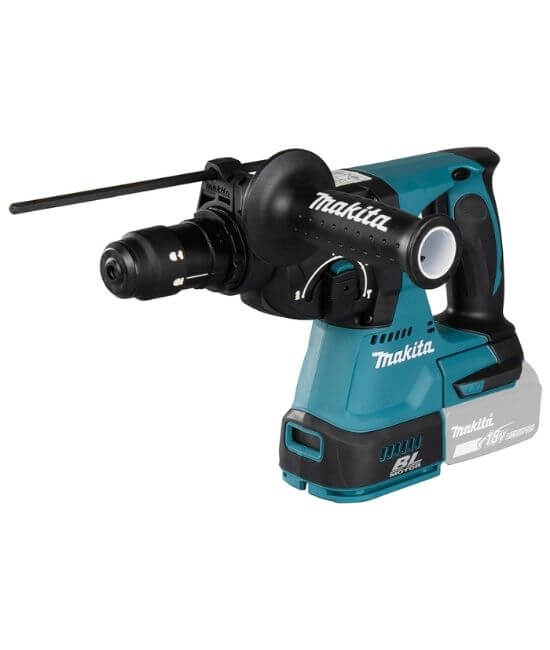
Makita DHR243Z – 18V Brushless Cordless Rotary Hammer
Rotary Hammer
Cordless
Brushless
Strengths: 2.0 J, brushless motor, compatible with the Makita 18V range, interchangeable chuck, good runtime with a 5 Ah battery.
Limitations: lower power compared to high-end corded models for larger diameters.
Recommended use: mobile work, non-intensive concrete drilling, job sites without electrical access.

Milwaukee M18 FPD2-502X – 18V Cordless Hammer Drill Driver
Hammer Drill
Cordless
Versatile
Strengths: 135 Nm torque, 32,000 bpm, includes 2x 5 Ah batteries, compact and versatile.
Limitations: limited to ~16 mm in concrete, slower than a rotary hammer.
Recommended use: all-in-one tool for driving screws, drilling wood/metal, and occasional concrete drilling.
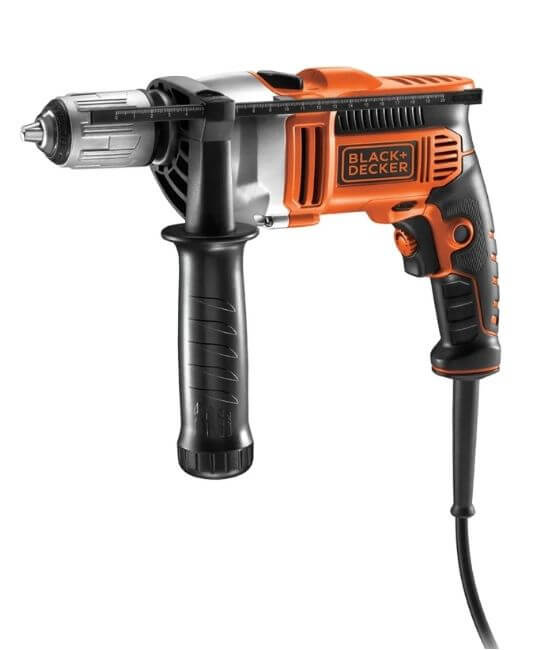
Black+Decker KR805K – Corded Hammer Drill for Home Use
Hammer Drill
Corded
Entry-Level
Strengths: 800 W, 13 mm metal chuck, affordable price, suitable for brick and light concrete.
Limitations: ineffective on hard or reinforced concrete, requires strong manual pressure.
Recommended use: occasional DIY, small home projects.
Tips for Drilling Concrete Safely and Effectively
Preparation
- Mark the exact spot for the hole.
- Use a center punch or a small chisel tap to start the drilling.
- Check for electrical wires or pipes with a detector.
Tool Selection and Setup
- Install a suitable masonry bit (tungsten carbide or SDS).
- Start at low speed, then switch on the hammer function.
- Use the depth stop if needed.
Drilling Technique
- Hold the tool with both hands, keeping it perpendicular to the surface.
- Do not apply excessive pressure: let the hammer action do the work.
- Drill in stages to prevent overheating and to clear out dust.
Handling Obstacles
- If you hit rebar, use a special reinforced-concrete bit or slightly shift the hole.
Finishing
- Clean the hole with a vacuum or a blow-out pump before inserting an anchor or a fastener.
Essential Accessories for Concrete Drilling
Suitable Concrete Drill Bits
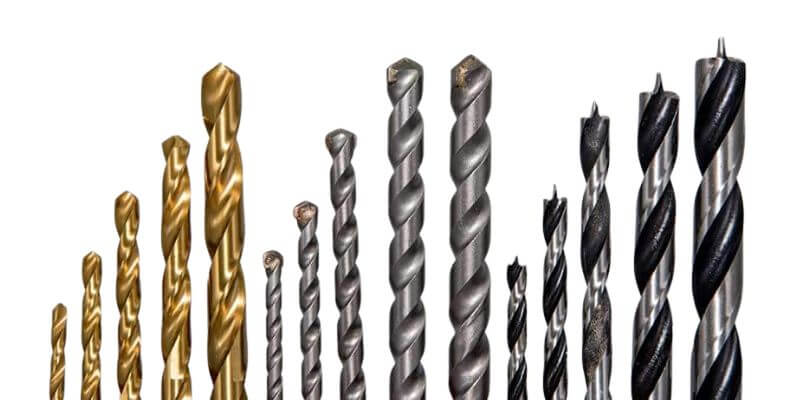
- Tungsten Carbide (Widia): wear resistance and efficiency on hard materials.
- SDS-Plus or SDS-Max Bits: for rotary hammers, providing secure anchoring and optimal impact transfer.
- Common Diameters: 4 to 16 mm for standard jobs, up to 30 mm and beyond for specific applications.
Protective Equipment (PPE)
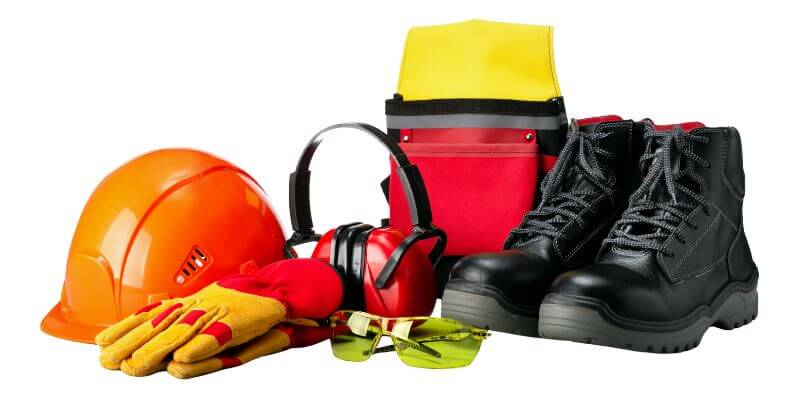
- Safety Glasses: protection against flying debris.
- Dust Mask: filters silica dust.
- Ear Protection (earmuffs or earplugs): reduces noise (over 100 dB with some rotary hammers).
- Anti-Vibration Gloves: comfort and improved grip.
Practical Accessories
- Depth Stop: ensures precision in drilling depth.
- Auxiliary Handle: provides better control of the tool.
- Dust Extraction System: built-in or attachable, for cleaner drilling.
- Adhesive Tape: visual depth marker or partial dust collection.
Drill Bit ↔ Anchor Correspondence
Drill Bit Diameter (mm)
Anchor Diameter (mm)
Common Applications
Conclusion

Article written by Quentin François, DIY enthusiast for over 10 years and author of hands-on guides tested in the workshop.














